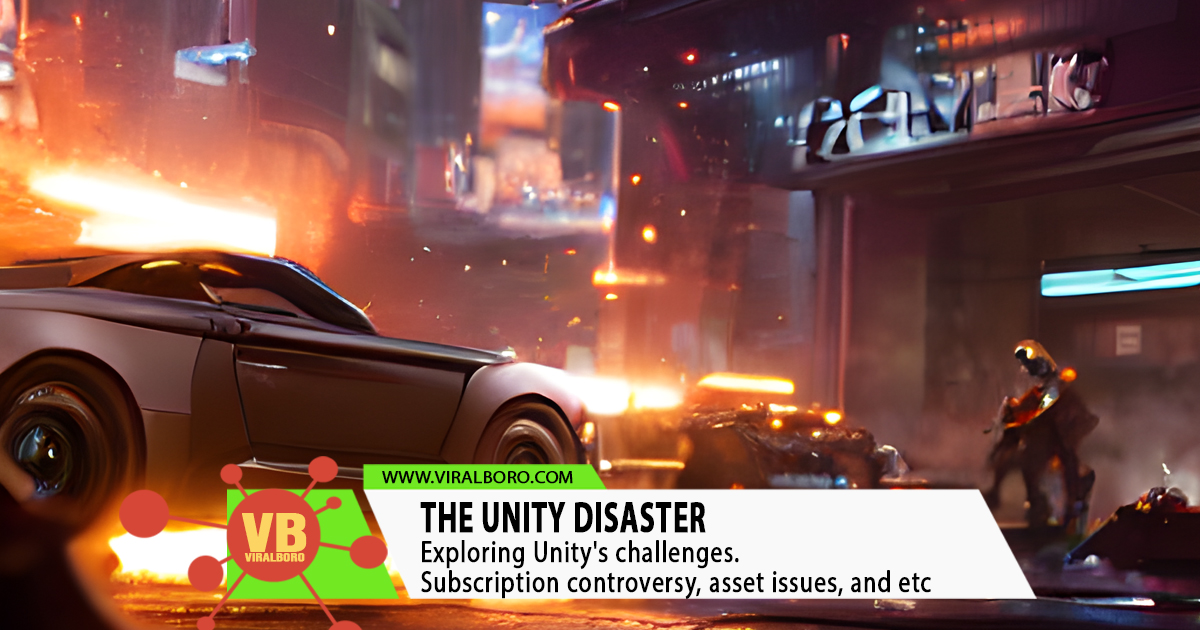The Unity Disaster
Unraveling the Troubles of a Game Building Platform
In the world of game development, Unity has been a prominent name for many years. This powerful game building platform has allowed developers to create breathtaking games that have captivated millions of players worldwide. However, in recent times, Unity has faced several controversies and setbacks that have shaken the confidence of both developers and the gaming community.
Unity made its debut in 2005, and since then, it has become one of the most popular game development engines globally. Its user-friendly interface, versatile capabilities, and cross-platform compatibility made it a go-to choice for both indie developers and large game studios. Unity played a pivotal role in democratizing game development, allowing anyone with a passion for games to bring their ideas to life.
Unity's strengths lie in its accessibility and flexibility. It provides developers with a powerful set of tools for creating 2D and 3D games, as well as interactive experiences for various platforms, including PC, consoles, mobile devices, and even augmented and virtual reality. The Unity Asset Store, which offers a vast library of assets and plugins, further accelerated development processes and reduced the barrier to entry for many aspiring game creators. The Disaster Unfolds
Unity's journey, however, hit a rough patch in recent years, and several factors contributed to what can be described as the "Unity disaster."
Subscription Model Controversy:
The Unity's decision to shift towards a subscription-based pricing model stirred up significant controversy within the community . Many developers, especially indie creators, were left feeling financially burdened by the new pricing structure. While Unity argued that the model allowed for more frequent updates and improved support, it alienated a significant portion of its user base.
-
Asset Flip and Store Problems:
The Unity Asset Store, once a thriving marketplace for developers to find assets and tools, encountered issues with asset quality and asset flipping. The flood of low-quality assets made it increasingly difficult for developers to find trustworthy resources, ultimately undermining the store's credibility.
-
Quality Control Challenges:
As Unity grew in popularity, concerns about the quality of games created on the platform arose. The flood of shovelware and asset-flipped games on digital storefronts tarnished the reputation of both Unity and its developers. Unity was criticized for not implementing stringent quality control measures to prevent subpar games from saturating the market.
Lack of Innovation:
Some developers argued that Unity had become stagnant in terms of innovation. While competitors like Unreal Engine continued to push the boundaries of real-time graphics and immersive experiences, Unity seemed to be falling behind, leading many to question the platform's long-term viability.
Technical Issues:
Reports of bugs, glitches, and performance issues became increasingly common among Unity developers. While Unity had been known for its stability in the past, these technical problems started eroding the trust of developers and players alike.
The Fallout
The Unity disaster had significant consequences for both developers and the gaming industry as a whole:
Loss of Trust:
Unity's missteps eroded the trust of developers who had once relied on the platform for their projects. Many developers began exploring alternatives, leading to a fragmented development landscape.
Innovation Gap:
Unity's perceived lack of innovation gave rise to concerns about its competitiveness in the ever-evolving game development industry. This innovation gap could potentially hinder the creation of groundbreaking games in the future.
Indie Developer Struggles:
The subscription model changes hit indie developers particularly hard, forcing many of them to reevaluate their choice of game engine or scale down their projects.
Market Saturation:
The influx of subpar games on digital storefronts due to the lack of quality control mechanisms harmed the gaming industry's reputation and frustrated players who were inundated with low-quality content.

